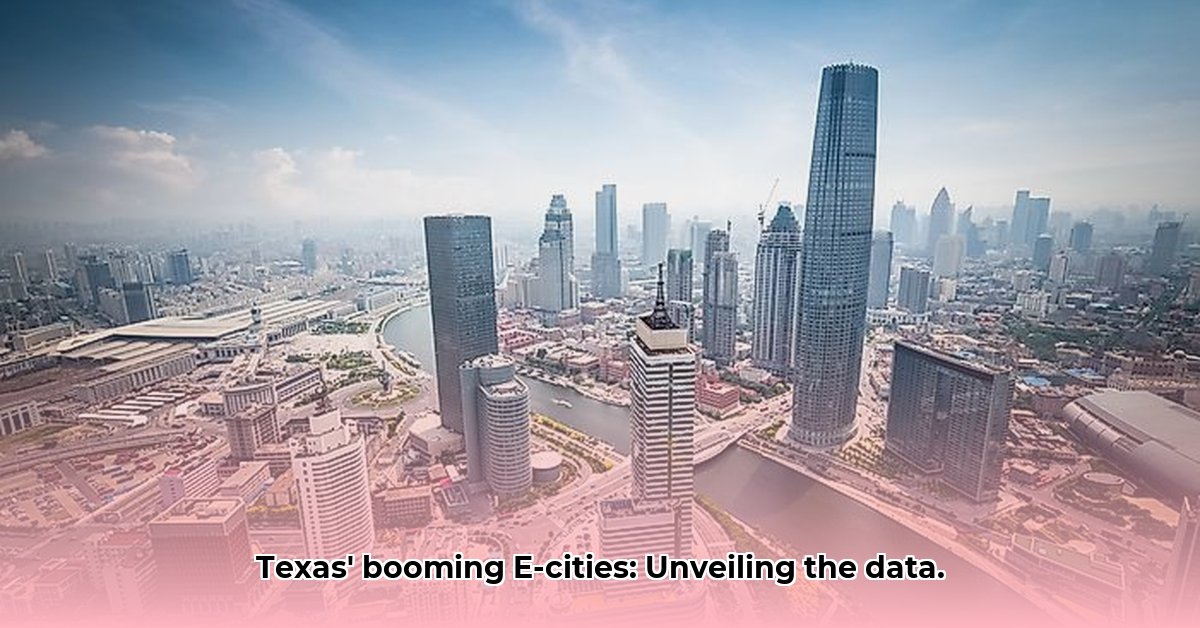Ever wondered about the Texas towns whose names start with “E”? From sprawling cities to quaint towns, they’re all part of the Lone Star State’s story. We’re taking a detailed look at locales like El Paso, Edinburg, and Euless – exploring their populations, economic engines, and growth trajectories. This is more than just reciting statistics; we’ll paint a vivid picture of life in these communities, showcasing the unique character that defines each one. Whether you’re considering a move to Texas, exploring business opportunities, or simply curious about the state’s hidden gems, join us as we uncover the “E” cities of Texas! For more on major Texas cities, see this useful resource.
Exploring Texas’ “E” Cities: A Deep Dive
Texas, a state celebrated for its vastness and diversity, reveals fascinating nuances even when focusing solely on cities beginning with the letter “E.” Each community possesses a unique story shaped by its population, growth patterns, and economic drivers. Let’s embark on an exploration of these cities, examining their defining characteristics.
We’ll begin with the major players – the most populous “E” cities in Texas, which often dominate headlines. However, it’s crucial not to overlook the smaller, equally vital communities that contribute to the state’s rich tapestry.
Texas’ Largest “E” Cities: Population Dynamics and Economic Landscapes
El Paso, Edinburg, and Euless stand out as the population powerhouses among Texas cities starting with “E.” While all three exhibit population growth, their economic foundations and demographic makeups differ significantly.
El Paso, a bustling border city with a significant international trade presence, thrives on the flow of goods and people across the border. The healthcare industry also plays a crucial role in its economy. Its location fosters a dynamic, bi-cultural environment with unique opportunities and challenges.
Edinburg, situated in the Rio Grande Valley, relies heavily on agriculture, which provides jobs and shapes the community’s identity. A growing presence in healthcare and education is diversifying its economic base, creating new avenues for growth. Edinburg’s proximity to the border also influences its economic landscape and cultural identity.
Euless, nestled within the Dallas-Fort Worth metroplex, boasts a more diverse economy, heavily influenced by the region’s thriving manufacturing, retail, and service industries. Being part of a larger metropolitan area provides access to resources and markets, but it also necessitates careful urban planning to manage rapid expansion and competition.
These three cities, despite sharing an initial letter, showcase striking contrasts in their economic drivers and demographic compositions, highlighting the diverse character within Texas.
- El Paso: Thrives on cross-border commerce, logistics, and healthcare, reflecting a vibrant border culture.
- Edinburg: Supported by agriculture, healthcare, and education.
- Euless: Benefits from its strategic location within the Dallas-Fort Worth metroplex, with a diverse economy encompassing manufacturing, retail, and services.
Smaller “E” Cities: Economic Niches and Community Resilience
Beyond the major urban centers, Texas boasts numerous smaller cities beginning with “E,” each with its own distinct identity. These communities display an even wider array of characteristics, with some deeply rooted in agriculture, others specializing in niche industries, and still others relying on tourism.
The growth patterns of these smaller cities are often linked to their proximity to larger urban areas. Some experience growth due to spillover effects, while others grapple with attracting and retaining residents seeking opportunities in more populous regions. These communities face challenges related to infrastructure development, resource access, and preserving their unique character in a rapidly changing world.
Delving Deeper: Economic Factors Shaping City Growth
To fully appreciate the diversity of Texas’ “E” cities, let’s examine key economic drivers and demographic trends in more detail.
| City | Key Economic Drivers | Key Demographic Trends (Simplified) | Potential Challenges |
|---|---|---|---|
| El Paso | Cross-border trade, logistics, healthcare, tourism | Large Hispanic population, diverse cultural influences | Managing infrastructure growth, addressing border-related economic uncertainties. |
| Edinburg | Agriculture, healthcare, education | Predominantly Hispanic/Latino community, growing student population | Diversifying beyond agriculture and attracting higher-paying industries, managing population growth. |
| Euless | Manufacturing, retail, service industries | Diverse population, relatively young workforce | Maintaining affordability, managing traffic congestion, competing with other cities in the metroplex. |
| Smaller Cities | Varies greatly by location; often agriculture, tourism, or niche industries | Varies significantly by region, aging populations in some areas | Retaining young residents, attracting investment, preserving local character. |
The economic success and evolution of each city are intrinsically linked to its demographics. Urbanization, demographic shifts, and technological advancements continue to shape these communities in complex ways.
Charting the Future: Anticipated Growth Trends
What lies ahead for Texas cities starting with “E”? While population growth is projected to continue in many areas, sustainable urban planning is crucial to mitigate challenges associated with rapid expansion. Strategic investments in infrastructure – roads, utilities, public transportation, and broadband internet – are essential for maintaining quality of life and fostering economic prosperity.
Diversifying the economic base is a key strategy for long-term resilience. Cities that depend heavily on a single industry are vulnerable to economic fluctuations. Cultivating a mix of industries creates stability and expands opportunities for residents. Adapting to evolving demographics and addressing the needs of a diverse population is essential for fostering a thriving sense of community. The future success of these cities hinges on their ability to adapt, innovate, and make informed, strategic decisions.
Comparing Economic Indicators of Small vs Large Texas Cities Starting with E
Let’s delve into the economic strengths and challenges of selected “E” cities in Texas, illustrating the differences between large and small economies.
- Job growth is common across Texas but varies widely by sector and location.
- Long-term economic assessments require comprehensive data, which is often limited.
- Location, population size, and key industries are critical factors in comparing cities.
El Paso: Economic Overview and Market Analysis
El Paso’s economy benefits from cross-border trade, logistics, tourism, manufacturing, and healthcare. Recent economic trends have been influenced by border security concerns, fluctuations in international trade, and broader national economic cycles.
Edinburg & Euless: Economic Comparison & Market Analysis
Edinburg’s economy is closely tied to agriculture, healthcare, and education. Euless benefits from its proximity to the Dallas-Fort Worth metroplex, resulting in a diversified economy with strengths in retail, services, and light manufacturing. Comparing these cities requires accounting for these fundamental differences in economic drivers.
Comparing the Cities: Strategies and Considerations
When directly comparing these cities, consider the following factors:
- Population Size: The number of residents influences economic activity and industry diversification.
- Geographic Location: Location impacts access to resources, transportation, labor markets, and trade opportunities.
- Key Industries: Dominant sectors differ between large and small cities, influencing employment and revenue streams.
- Growth Trends: Analyzing employment, population, and sector growth provides insight into economic trajectories.
| City | Population (approx.) | Key Economic Drivers | Growth Trends (recent) |
|---|---|---|---|
| El Paso | 680,000 | Trade, logistics, healthcare, tourism, manufacturing | Mixed, influenced by border dynamics |
| Edinburg | ~109,000 | Agriculture, healthcare, education | Moderate, with growth in healthcare and education |
| Euless | ~58,000 | Retail, services, light manufacturing | Relatively strong, driven by DFW metroplex growth |
Effective economic comparisons require a nuanced approach, extending beyond simple population figures. A holistic analysis involves considering size, location, industry, and growth patterns.
Diversification Strategies in Smaller Texas E Cities
Let’s delve into some Texas cities starting with “E,” examining their population, location, and key economic forces. Are they all alike? Not at all. Each has its unique story.
- Maintaining and improving quality of life is vital for long-term economic resilience.
*
- Spiritual Connotation of Names Reveals Their Divine Meaning and Purpose - November 18, 2025
- Unpacking the Importance of Names in the Bible for Deeper Understanding - November 17, 2025
- Avery Biblical Meaning Infers Wisdom, Counsel, and Protection - November 16, 2025










